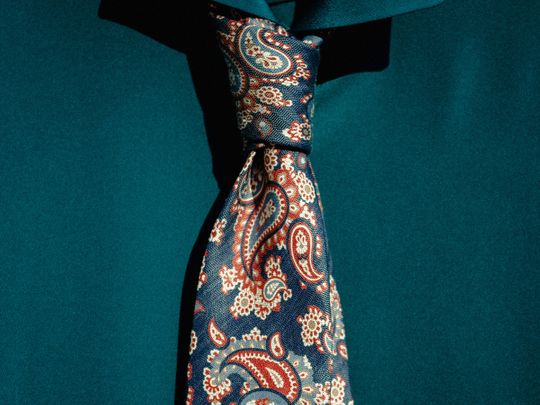
If you were in Britain in the 19th century, you’d see a beautiful motif, shaped like a curved teardrop, on most people’s shawls. The paisley shawl was an exploding trend and a status symbol. But where did it come from?
Click start to play today’s Spell It, where we trace the ‘quiet’ global dominance of this print.
The name ‘paisley’ comes from Paisley, Scotland, a town that saw a huge manufacturing boom in the 19th century, when it produced shawls with this motif. But before it was called paisley, the iconic shape was called ‘ambi’ in India – take a closer look and you can see why. It looks like a stylised raw mango, called ‘aam’ in Hindi.
In the 15th century, Persian weaving techniques were brought to India by the ruler of Kashmir. Among the designs was the cypress tree motif, which you can still see today in the designs of carpets, shawls, pottery, tiles and other items. Cypress trees are still quite common in Iran. The oldest one recorded is called the Cypress of Abarkuh, and it is located in the Yazd province – it’s about 4,500 years old.
Legend has it that the paisley was born when a stray songbird sat on the very tip of a cypress, causing it to bend slightly.
In reality, however, when the cypress tree print made its way to the Subcontinent, Indian weavers saw it and took the opportunity to give it their own creative twist. Inspired by mangoes, which are grown all around India, they rounded the cypress’ straight edges and added a curved end. Et voila! The ambi print was formed.
By the time the 18th century came around, India had been colonised by the British. The East India Company imported shawls with the ambi print from Kashmir and Iran to Europe in large quantities. It found an eager audience. British and European women loved wearing these exotic designs, which often included elaborate scenes, such as people riding on elephants, and groves of palm trees.
Soon, there was an attempt to recreate the same prints on home turf, in Britain. In 1790, production of woven shawls began in Norwich, England, and then in a much bigger facility in Paisley, Scotland. Initially, though, customers still preferred Kashmiri shawls, since they were made with genuine cashmere, which provided excellent insulation. Kashmiri looms also produced fully reversible fabric, with a riot of colours, while the West was only able to produce a two-colour combination of indigo and madder (a shade of rose).
As the production of shawls scaled up, however, the British began improving their processes, and ambi became paisley, for all intents and purposes.
The design took over Europe. The print appeared in paintings, like William Holman Hunt’s The Awakening Conscience from 1853, in which a woman is depicted wearing a red paisley shawl.
Soon, the print spread to the US. You could see it on bandanas worn by cowboys in the Wild West era, and it became part of the hippie movement in the 1960s. From British pop-rock band The Beatles to American singer Frank Sinatra, everyone wore fabrics with paisley designs - many even painted their minivans and cars with colourful this popular pattern.
Whether ambi or paisley, palme (in France) or bota (in the Netherlands), the humble mango had successfully crossed the oceans to become a universally loved motif.
What do you think of the success of the paisley design? Play today’s Spell It and tell us at games@gulfnews.com.




